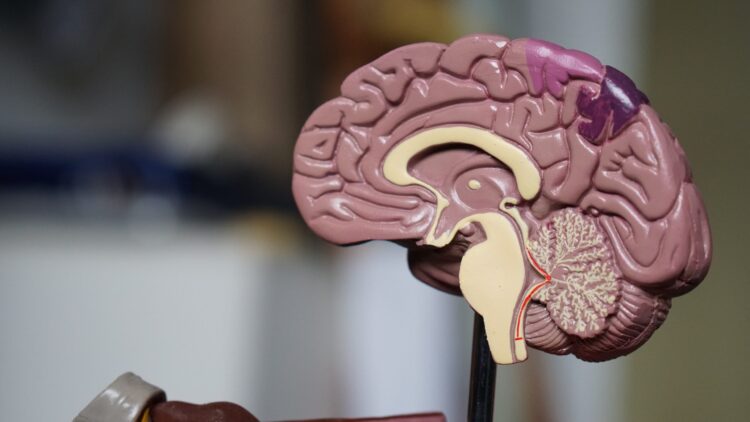mostlylurking
Member
you're welcome.I have listened to many of Elliot Overtons presentations he is very knowledgeable, I find the recurring observations of thiamine and COVID-19 disease symptoms being alleviated by thiamine to be fascinating as well as counterintuitive (but undeniably effective) the idea of oxygen being toxic if introduced to a patient too soon after coming out of shock is new but I understand that the cells are in a hypo metabolic state and just cannot take up the oxygen. I think this knowledge is imperative if we see restrictions on drugs such as acetozolimide as we did in the pandemic. A, large bag a tank of CO2 and a regulator probably would have saved far more lives than ventilators, Medazolam and opioid combinations. Thank you for once again expanding my knowledge on this seemingly overlooked B vitamin @mostlylurking.
You may find researching oxygen and oxidation helpful. Problems with oxygen happen when there isn't a clean burn. Reactive Oxygen Species (ROS) is bad stuff. Thiamine is needed for the clean burn. Thiamine reduces ROS.
Dr. Lonsdale refers to thiamine as the "spark plug" for the combustion.

How Can Something As Simple as Thiamine Cause So Many Problems? - Hormones Matter
Is thiamine deficiency too simple to explain the devastating nature of the systemic adverse reactions to some vaccines and medications?
 www.hormonesmatter.com
www.hormonesmatter.com
Thiamine and Oxidative Metabolism: The Missing Spark Plug
Our brain computers rely completely on oxidative metabolism represented simply thus:Fuel + Oxygen + Catalyst = Energy
Each of our one hundred trillion body/brain cells is kept alive and functioning because of this reaction. It all takes place in micro “fireplaces” known as mitochondria. Oxygen combines with fuel (food) to cause burning or the combustion – think fuel combustion engine. We need fuel, or gasoline, to burn and spark plugs to ignite in order for the engines to run.
In our body/brain cells it is called oxidation. The catalysts are the naturally occurring chemicals we call vitamins (vital to life). Like a spark plug, they “ignite” the food (fuel). Absence of ANY of the three components spells death.
Antioxidants like vitamin C protect us from the predictable “sparks” (as a normal effect of combustion) known as “oxidative stress”. Vitamin B1, is the spark plug, the catalyst for these reactions. As vitamin B1, thiamine, or any other vitamin deficiency continues, more and more damage occurs in the limbic system because that is where oxygen consumption has the heaviest demand in the entire body. This part of the brain is extremely sensitive to thiamine deficiency.
-end paste-
Dr. Lonsdale talks about thiamine deficiency causing "pseudo hypoxia". I experienced that myself in 2020. It felt like "air hunger" to me and I found it impossible to wear the required mask at the doctor's.
There are a lot of good articles about thiamine that are focused on aquaculture. Here's one:
-paste-
Hypoxia is a condition that occurs when the amount of dissolved oxygen (DO) in the water gets depleted less than 2 to 3 mg/L. DO in water is easily affected by sudden weather conditions such as temperature, air pressure and precipitation [1]. In recent years, global warming and climate change caused by the greenhouse effect have made the water body become hypoxic more frequently [2]. In addition, high-density farming and artificial diet feeding also affect the amount of dissolved oxygen in the water [3].
Hypoxia causes energy loss, reactive oxygen species (ROS) accumulation, resulting in metabolic disorders and oxidative stress in organisms [4]. Aquatic organisms are more prone to hypoxia problems due to the nature of their environment compared with terrestrial animals [5]. Hypoxia disturbs energy metabolism, which activates anaerobic glycolysis, and generates lactate with insufficient ATP energy [6]. Therefore, to meet energy requirement under hypoxia, animals undoubtedly need more glucose for anaerobic glycolysis [7]. As hypoxia progresses, the limited oxygen availability causes increased ROS production due to an ineffective electron transfer in the mitochondria especially when flux is not attenuated through the tricarboxylic acid (TCA) cycle [8]. Reoxygenation causes oxygen to react rapidly with the electrons accumulated in the mitochondria leading to the rise in ROS production [9]. Increased ROS production triggers apoptosis, which causes severe oxidative mitochondrial damage [10]. Therefore, reducing carbohydrate flow into the TCA and increasing antioxidant capacity of cells is important for the survival of organisms during hypoxia.
Pyruvate dehydrogenase complex (PDC) is one the main pathways involved in carbohydrate metabolism in animal cells, which links glycolysis and the TCA cycle by catalyzing the conversion of pyruvate into acetyl-CoA [11]. The PDC is regulatory by phosphorylation-dephosphorylation of pyruvate dehydrogenase (PDH). The PDH activities require thiamine as a cofactor [12]. Thiamine, also known as vitamin B1, becomes a metabolically active coenzyme when esterified with two phosphates, yielding thiamine pyrophosphate [12]. In addition to PDH, oxoglutarate dehydrogenase and transketolase require thiamine as a cofactor [13]. Thus, thiamine is essential for normal carbohydrate metabolism in most organisms.
Most animals have limited ability to synthesize and store thiamine for maintaining its intracellular concentration and thus require supplementation in diets [14]. The need for thiamine supplementation increases in animals under stress due to intracellular disturbance, which interferes with cellular carbohydrate metabolism and energy production [15]. Therefore, animals have developed regulatory and adaptive mechanisms in order to maintain intracellular thiamine concentration. Indeed, solute carrier family 19 members A2 (SLC19A2) and A3 (SLC19A3), encoding thiamine transporter 1 and thiamine transporter 2, respectively, have been reported as regulators for transporting thiamine [16,17]. Currently, studies on the two genes are mainly focused on mammals, possibly related to typical diseases such as cancer, diabetes and Alzheimer's disease, which cause thiamine deficiency [18,19].
-end paste-

